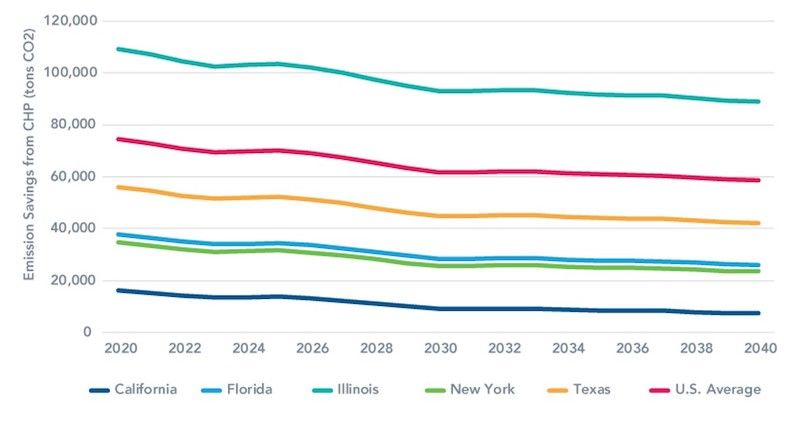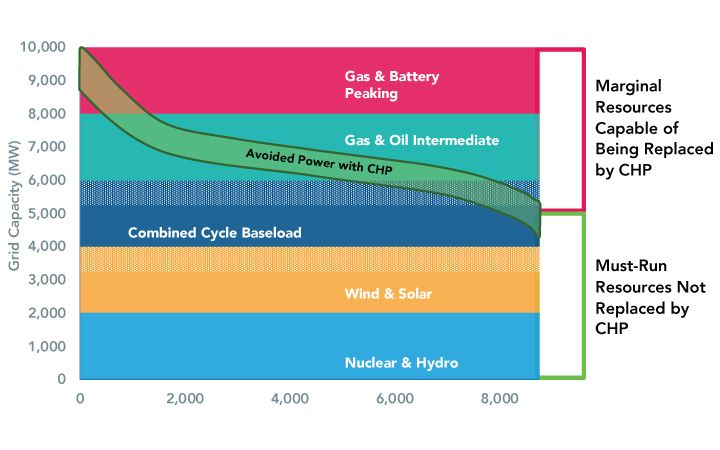
Combined heat and power deserves a seat at the decarbonization table
Eliminating emissions is the dream, but efficient combined heat and power (CHP) offers a solid stopgap for reducing emissions in the meantime.
Natural gas-fueled combined heat and power (CHP) has long been an efficient and reliable source of distributed energy. But how does it fit into a rapidly decarbonizing and increasingly renewable energy sector?
In some situations, it fits surprisingly well. That’s because CHP is an extremely efficient technology that can displace less-efficient fossil fuel resources on the electric grid. Thanks to the recovery and use of thermal energy that would otherwise go to waste, natural gas CHP systems produce fewer greenhouse gas (GHG) emissions than other fossil fuel generation technologies. We cover this topic in-depth in our white paper: As the Grid Gets Greener, Combined Heat and Power Still Has a Role to Play.
In a recent analysis of CHP emissions compared to marginal grid emissions through 2040, CHP was shown to produce a net reduction in GHG emissions—even in states like California with low grid emissions rates.
In Figure 1, emissions for a 20 MW CHP system show reductions through 2040 compared to separate heat production and utility power purchases (when applying the marginal emissions rates for five states and the U.S. average). Even as the grid continues to decarbonize thanks to ambitious renewable and clean energy goals, baseload resources like CHP will still primarily displace electricity from fossil fuel generators—resulting in a net emissions reduction.
Figure 1. Annual emission savings (tons CO2) from a 20 MW CHP system using marginal grid emission rates, 2020-2040

Over many years, CHP can have a material impact on grid GHG emissions as long as fossil fuel resources are still in play. The important concept to focus on is determining how CHP integration impacts utility dispatch decisions, and, in turn, how grid emissions are affected. In most cases, CHP will reduce grid requirements for intermediate and peaking resources—the “marginal” generators—which tend to use less-efficient fossil fuel technologies.
Figure 2 shows the impact that a portfolio of CHP installations would likely have on a grid with battery peakers for demand support, zero coal generation, and a significant amount of renewables.
Figure 2. Example of future grid resources avoided with CHP power

Even in this example with high renewable penetration, CHP would produce a net reduction in emissions because it is primarily displacing fossil fuel resources.
We documented the importance of applying the appropriate marginal emissions method to CHP resources in our recent Climate Action Plan for the Commonwealth of Pennsylvania. In it, we saw vastly different outcomes for the action plan’s GHG emission reduction strategies, depending on whether marginal or average “all source” grid emissions rates were used for displaced generation from CHP.
Read more about our forecasting and analysis methods—and why CHP should be on the menu for near-term emissions reductions plans—in our latest white paper, As the Grid Gets Greener, Combined Heat and Power Still Has a Role to Play.
